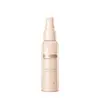What's inside
What's inside
 Key Ingredients
Key Ingredients

 Benefits
Benefits

 Concerns
Concerns

 Ingredients Side-by-side
Ingredients Side-by-side

Water
Skin ConditioningButylene Glycol
HumectantPEG-50 Hydrogenated Castor Oil
EmulsifyingPhenoxyethanol
PreservativeAloe Barbadensis Leaf Juice
Skin ConditioningCaprylyl Glycol
EmollientDisodium EDTA
Sodium Citrate
BufferingTocopheryl Acetate
AntioxidantPropylene Glycol
HumectantAmp-Acrylates/Allyl Methacrylate Copolymer
Parfum
MaskingHamamelis Virginiana Leaf Extract
Skin ConditioningCitric Acid
BufferingChamomilla Recutita Extract
Skin ConditioningPotassium Sorbate
PreservativeSodium Benzoate
MaskingHydroxyapatite
AbrasiveWater, Butylene Glycol, PEG-50 Hydrogenated Castor Oil, Phenoxyethanol, Aloe Barbadensis Leaf Juice, Caprylyl Glycol, Disodium EDTA, Sodium Citrate, Tocopheryl Acetate, Propylene Glycol, Amp-Acrylates/Allyl Methacrylate Copolymer, Parfum, Hamamelis Virginiana Leaf Extract, Citric Acid, Chamomilla Recutita Extract, Potassium Sorbate, Sodium Benzoate, Hydroxyapatite
Water
Skin ConditioningPropanediol
SolventButylene Glycol
HumectantAcrylates/Ethylhexyl Acrylate Copolymer
Acrylates/Dimethylaminoethyl Methacrylate Copolymer
1,2-Hexanediol
Skin ConditioningHydroxyacetophenone
AntioxidantNiacinamide
SmoothingPEG-40 Hydrogenated Castor Oil
EmulsifyingPolysorbate 20
EmulsifyingDisodium EDTA
Sodium Hyaluronate
HumectantRosa Damascena Flower Water
MaskingParfum
MaskingCaprylyl Glycol
EmollientPhenoxyethanol
PreservativePortulaca Oleracea Extract
Skin ConditioningMenthyl Lactate
MaskingCentella Asiatica Extract
CleansingHelichrysum Stoechas Extract
TonicWater, Propanediol, Butylene Glycol, Acrylates/Ethylhexyl Acrylate Copolymer, Acrylates/Dimethylaminoethyl Methacrylate Copolymer, 1,2-Hexanediol, Hydroxyacetophenone, Niacinamide, PEG-40 Hydrogenated Castor Oil, Polysorbate 20, Disodium EDTA, Sodium Hyaluronate, Rosa Damascena Flower Water, Parfum, Caprylyl Glycol, Phenoxyethanol, Portulaca Oleracea Extract, Menthyl Lactate, Centella Asiatica Extract, Helichrysum Stoechas Extract
Ingredients Explained
These ingredients are found in both products.
Ingredients higher up in an ingredient list are typically present in a larger amount.
Butylene Glycol (or BG) is used within cosmetic products for a few different reasons:
Overall, Butylene Glycol is a safe and well-rounded ingredient that works well with other ingredients.
Though this ingredient works well with most skin types, some people with sensitive skin may experience a reaction such as allergic rashes, closed comedones, or itchiness.
Learn more about Butylene GlycolCaprylyl Glycol is a humectant and emollient, meaning it attracts and preserves moisture.
It is a common ingredient in many products, especially those designed to hydrate skin. The primary benefits are retaining moisture, skin softening, and promoting a healthy skin barrier.
Though Caprylyl Glycol is an alcohol derived from fatty acids, it is not the kind that can dry out skin.
This ingredient is also used as a preservative to extend the life of products. It has slight antimicrobial properties.
Learn more about Caprylyl GlycolDisodium EDTA plays a role in making products more stable by aiding other preservatives.
It is a chelating agent, meaning it neutralizes metal ions that may be found in a product.
Disodium EDTA is a salt of edetic acid and is found to be safe in cosmetic ingredients.
Learn more about Disodium EDTAParfum is a catch-all term for an ingredient or more that is used to give a scent to products.
Also called "fragrance", this ingredient can be a blend of hundreds of chemicals or plant oils. This means every product with "fragrance" or "parfum" in the ingredients list is a different mixture.
For instance, Habanolide is a proprietary trade name for a specific aroma chemical. When used as a fragrance ingredient in cosmetics, most aroma chemicals fall under the broad labeling category of “FRAGRANCE” or “PARFUM” according to EU and US regulations.
The term 'parfum' or 'fragrance' is not regulated in many countries. In many cases, it is up to the brand to define this term.
For instance, many brands choose to label themselves as "fragrance-free" because they are not using synthetic fragrances. However, their products may still contain ingredients such as essential oils that are considered a fragrance by INCI standards.
One example is Calendula flower extract. Calendula is an essential oil that still imparts a scent or 'fragrance'.
Depending on the blend, the ingredients in the mixture can cause allergies and sensitivities on the skin. Some ingredients that are known EU allergens include linalool and citronellol.
Parfum can also be used to mask or cover an unpleasant scent.
The bottom line is: not all fragrances/parfum/ingredients are created equally. If you are worried about fragrances, we recommend taking a closer look at an ingredient. And of course, we always recommend speaking with a professional.
Learn more about ParfumPhenoxyethanol is a preservative that has germicide, antimicrobial, and aromatic properties. Studies show that phenoxyethanol can prevent microbial growth. By itself, it has a scent that is similar to that of a rose.
It's often used in formulations along with Caprylyl Glycol to preserve the shelf life of products.
Water. It's the most common cosmetic ingredient of all. You'll usually see it at the top of ingredient lists, meaning that it makes up the largest part of the product.
So why is it so popular? Water most often acts as a solvent - this means that it helps dissolve other ingredients into the formulation.
You'll also recognize water as that liquid we all need to stay alive. If you see this, drink a glass of water. Stay hydrated!
Learn more about Water